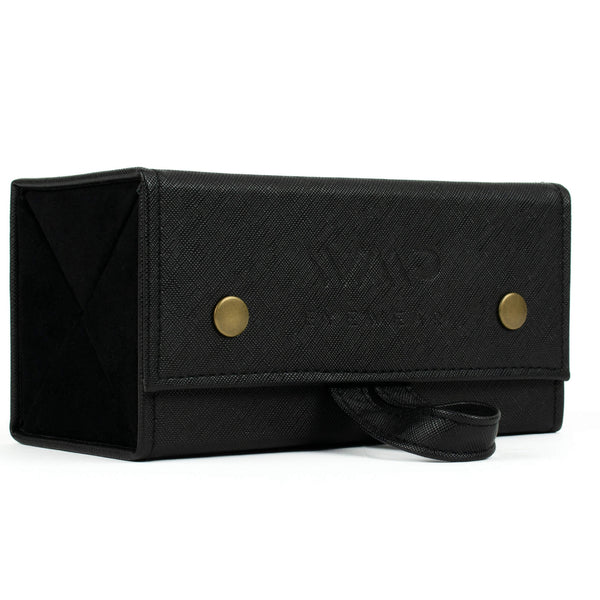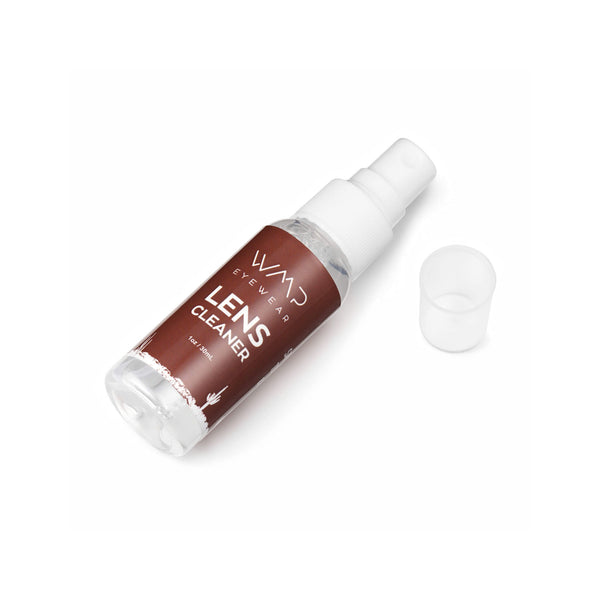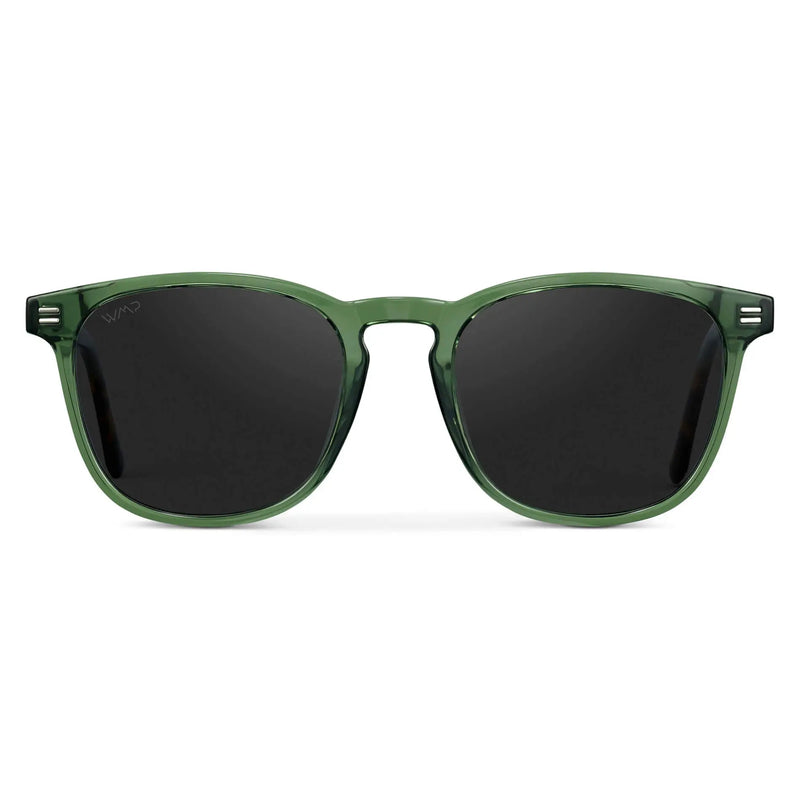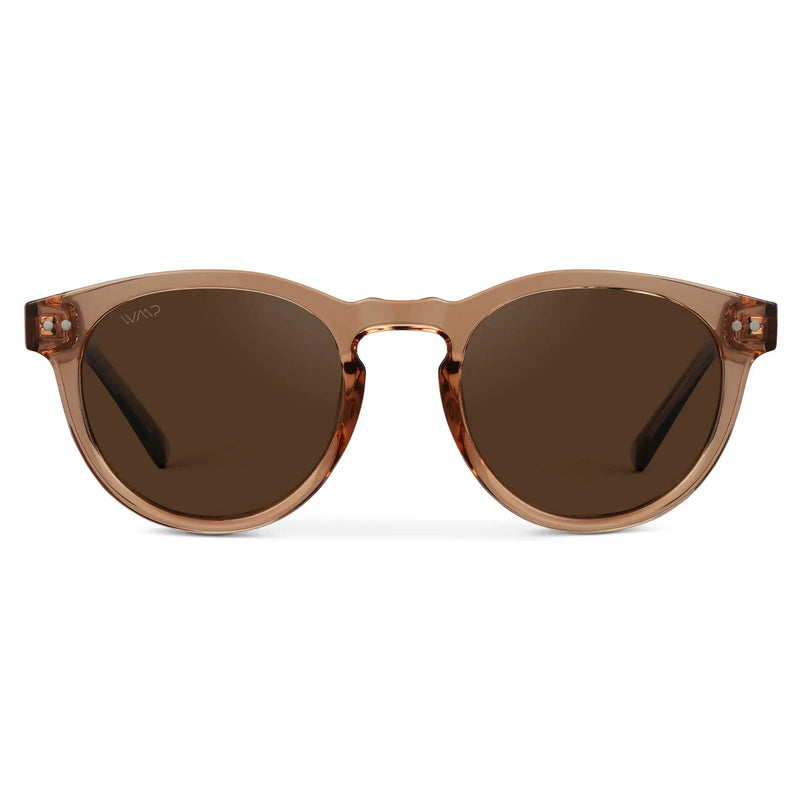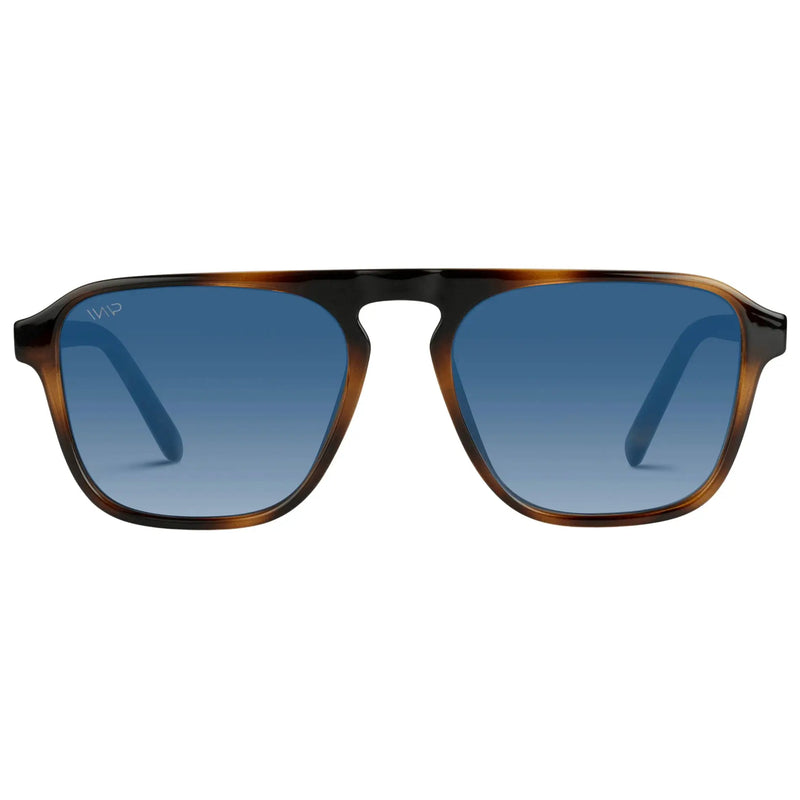UV Protection vs Polarization: What's the Difference?

So you’re shopping around for your next pair of sunglasses and you’ve noticed the words “polarization” and “UV protection” are literally everywhere. Eyewear advertisements and product descriptions throw the two terms around like they’re stuck together in clingwrap. They might even seem interchangeable.
There’s a word for this—it’s called “conflation.” It happens when two words appear together so frequently that people start getting their individual meanings mixed up. That’s pretty much exactly what’s happened with “UV protection” and “polarization.” The terms are so regularly paired together that it’s likely you’re unaware of their difference—or if there really is one at all.
But “UV protection” and “polarization” definitely aren’t interchangeable. Despite what many people believe, the two actually have nothing to do with each other.
The difference between UV protection and polarization comes down to the science of light waves and how different filters interact with them. But we’re guessing that you don’t want to spend your afternoon getting into the nitty-gritty of electromagnetic radiation, so we’ll keep this explanation short and sweet.
The SparkNotes version of the difference between UV protection and polarization is this: UV protection guards your eyes from harmful UV rays while polarization works to minimize glare.
Craving a more in-depth explanation? No worries—we’ll break it down. Here are the facts about UV protection, polarization, and exactly how the two differ from each other.

What is Polarization?
Pretty much all of the light we encounter outside comes from the sun. But by the time that sunlight reaches your eyes, not all of it has come directly from the big ole star itself. Some of it reaches our eyes after scattering off other surfaces, like asphalt, water, grass, cars, trees, and pretty much everything else.
In the same way that a mirror can reflect sunlight, these other surfaces do, too—but with varying intensities. Textured surfaces like grass and trees are less reflective. But flat and shiny surfaces like calm bodies of water and automobiles are highly reflective. These flatter, highly reflective surfaces intensify sunlight, creating harsh glares. If you’ve ever squinted out over a lake and found yourself momentarily blinded, you know exactly what we’re talking about.
Polarized sunglasses have anti-glare properties that filter out harsh reflected light and save you the squinting. How? When an incoming light ray meets a surface, its waves scatter and change direction, transitioning to a horizontal position. Using an inlaid filter, polarized sunglasses are able to block out that horizontal light while still allowing vertical light in.
Basically, you can imagine polarized filters as tiny, invisible window blinds. Like slatted blinds, polarized filters only allow incoming light from select angles. Because polarized filters are positioned to only let in vertical light, they’re able to block harsh glares caused by horizontal light. But be warned: that doesn’t necessarily mean they’re absorbing harmful UV rays.
Benefits of Polarization
The most obvious perk of polarized lenses is that they stop glare. But outside of dampening reflections, polarization is also great for:
- Enhanced color vibrancy
- Relief from eye strain
- Increased visual contrast
- Overall clearer vision
- Relief from squinting
- The prevention of wrinkles around the eyes
Polarized shades are especially ideal for outdoor activities like snowboarding, skiing, boating, fishing, biking, and watersports. Because glare is a known cause of car wrecks, they’re also an absolute safety staple for anyone who drives.
Top Polarized Sunglasses at WMP Eyewear
Tate Unisex Polarized Sunglasses


Emerson Polarized Sunglasses
Abner Polarized Sunglasses for Men
What is UV Protection?
Most people already have the basic concept down pat: ultraviolet rays = bad and dangerous. That’s one of the main reasons why we put on sunscreen and wear protective eyewear in the first place.
To put it in more concrete terms, UV light is a particular wavelength of radiation that proves especially damaging to our skin and eyes. And its wavelength is higher than the visible spectrum of light. In other words, one of the most dangerous elements of UV rays is that we can’t see them at all, which sometimes means we’re unaware they’re there until the damage is already done.
UV rays are present year-round—even on extremely cloudy days. And wherever there’s UV rays, there’s the danger of severe eye damage. Excess UVA and UVB exposure won’t just leave your eyes burning and irritated; it can also impair your cornea, damage your retina and cause macular degeneration, cataracts, and abnormal growths. Not to terrify you, but in the most severe cases you could even go completely blind.
With that in mind, “UV protection” refers to a pair of sunglasses’ ability to effectively block ultraviolet rays. This is done through UV filters which manufacturers apply to lenses either as a treatment or a coating. Alternatively, in the case of polycarbonate lenses UV protection comes built in. Either way, the goal of these ultraviolet filters is to absorb harmful rays, stopping them in their tracks before they even have the chance to damage your eyes.
Quality UV-blocking sunglasses like the shades offered by WMP Eyewear are able to block almost all of the ultraviolet rays they encounter—around 99 - 100 percent. When shopping for sunglasses, never settle for anything less than a rating of UV 400 or higher.
Benefits of UV Protection
Not losing your vision or damaging your eyes is the most obvious perk of UV protection. But at the end of the day, ultraviolet protection should be considered less of a cool perk and more of an absolute standard.
In other words, make UV protection 100% mandatory. Outside of adding a stylish twist to your ensemble, the whole point of sunglasses is to protect your eyes from harmful rays. So when it comes to UV protection, never cut corners or compromise.
If you’re shopping for sunglasses of any kind, be sure the label or product description clearly lists 400 UVA or UVB protection. If you’re uncertain whether the pair you’re considering meets international UV-blocking standards, it’s simply not the pair for you.
Polarization Vs. UV Protection
Want the bottom line? Polarization and UV protection have absolutely nothing to do with each other.
Polarization means that a pair of sunglasses is able to filter out horizontal light waves, dampening unwanted glares and reflections. It also means increased color vibrancy, more dramatic contrast, and enhanced vision clarity.
UV protection, on the other hand, refers to a pair’s ability to absorb harmful UV rays, meaning it’s able protect your eyes from the long-term damage caused by overexposure.
The key takeaway?
Not all UV-blocking shades are polarized. And just because a pair of sunglasses is advertised as “polarized” doesn’t necessarily guarantee that it’s up to snuff on UV-protection—so always check that label for the 100% UVA/UVB indicator.
At the end of the day, polarization is a matter of personal preference, but there’s really no wiggle room when it comes to UV-protection.
You need UV protection. It’s possible you want polarization, too. The good news is that you don’t have to pick and choose. Plenty of WMP Eyewear’s collection offer full UV 400 protection with polarized filters—so you can have your cake and eat it, too.


